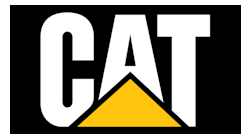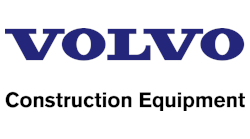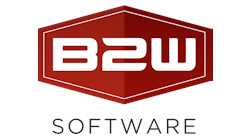A project involving a 20-acre site with more than 100 feet of elevation change for which Ryan Qualls could not do a comprehensive takeoff was the driving factor for him deciding it was time to upgrade to more comprehensive takeoff software.
The software product he had been using was no longer supported by the company that had designed it.
“I made my mind up that day that I needed to upgrade,” says Qualls, president of Pro Grade, a site development company of 20 employees who provide services throughout King County, WA.
“We’re not big, but we are very high quality in a lot of privately negotiated jobs, so I made the decision that whatever it takes from a software standpoint, I want to be on the front side of the curve,” he says.
Trimble software has takeoff functionality
Qualls also sought software that would not only do site takeoff but also incorporate GPS modeling and be able to do a digital terrain model.
Qualls researched the options and chose InSite SiteWork Earthwork & Estimating Software four years ago. He says he started deriving the return on investment (ROI) within six months.
“We ended up getting our first GPS model put together by that winter and we purchased a base and rover because we were going so well on the GPS modeling that December,” says Qualls. “We land more jobs. We go in on these privately negotiated jobs and the customers tell us ‘You know where every ounce of dirt is on these jobs.’ If our numbers are unilateral with somebody else’s, we’ve got a better grip on it.”
For contractors such as Qualls and others in the industry, advances in software are enabling them to do more work, do it more accurately, and attain a faster ROI.
Software development is moving at a rapid pace with two driving factors, notes Marco Cecala, president, Take-Off Professionals.
“Additional technologies such as LIDAR and photogrammetry have become common and software engines are improving to handle larger amounts of data,” he says. “Machines are also getting larger computers on board, allowing model builders to provide feature-rich data to increase productivity and improve outcome.”
Additionally, the 3D aspects of Building Information Modeling (BIM) have pushed development of software for civil contractors as well, notes Cecala.
“Surface rendering has improved and allows for better takeoff numbers and higher quality surfaces,” he adds.
Take-Off Professionals’ most advanced capabilities include the ability to import PDF files and produce linework for site features. Incorporation of volumes, pricing, and time components to takeoffs without the need to rework the numbers in a separate program is another capability.
Additionally, geo-referencing the takeoff and viewing satellite imagery of the current conditions allow for a better understanding of the job, resulting in a better bid, notes Cecala.
Incorporating various data types from spot elevations, LIDAR, and photogrammetry to produce a higher quality surface is another benefit, he adds.
“Takeoff software has come a long way since the early days when the grid cell method was used for calculating quantity takeoffs,” notes Casey Cyrus, business area manager, site positioning systems for Trimble.
“This was just a step up from paper calculations, although certainly a step in the right direction,” says Cyrus. “Today’s takeoff software is far more sophisticated with features that let users add or remove layers, define haul zones and hauling costs, create materials and site improvements libraries, and monitor fuel and truck usage.
“Takeoff software has really evolved from just being a tool for making calculations to a tool that provides valuable insight to help contractors make better business decisions.”
The most advanced capability in Trimble software is the takeoff functionality in Business Center -HCE, which allows users to define haul zones, haul roads, and haul costs; assign haul and material costs for bids; and manage haul scheduling.
It also enables users to monitor truck usage and fuel usage, and estimate labor needs. “Advanced features like these give managers greater visibility into both cut/fill material costs and labor, fuel usage, haul costs, and other quantifiable measures,” says Cyrus.
The first step to a profitable estimating job is an accurate site takeoff, points out Steve Warfle, product manager, InSite Software.
To that end, InSite SiteWork is designed to decrease time and increase accuracy with direct CAD and PDF file takeoff.
“This is the primary reason estimators have abandoned the systems first available in the 1980s which used paper plans and digitizers,” he adds. “CAD and PDF takeoffs which are done on screen eliminate plan printing costs, and estimators can be productive anywhere. Being able to push data to machine control systems on accepted bids with InSite’s Field General Office is another advantage of working with digital files.”
InSite’s dual window system “prevents the end-user from all the tedious zooming in and out a single window system requires,” says Warfle. “It also works extremely well for merging multi-sheet PDF plans. A coordinated cursor between the plan view (2D) and the 3-D Live feature lets end-users validate the existing, proposed, and subgrade adjustments instantly. RockAlert identifies difficult strata layers or water table in plan view and X-section.”
Additionally, Terrain-Link Trenches is an integrated utility module designed to use the earthwork grades to create profiles and provide accurate excavation quantities on sanitary and storm systems where the pipe runs straight from invert to invert, but the grade changes, says Warfle, adding that excavation is itemized by strata, and linear feet of backfill by cut bracket is calculated.
Viewpoint Construction Software offers a portfolio of construction solutions, including accounting, project management, takeoff, and estimating.
Noting that the company offers multiple takeoff estimating programs for different types of contractors, Bryan Stamp, enterprise customer sales rep for Viewpoint Construction Software, says it’s best to have a single solution that handles the takeoff process and the cost estimating, which “essentially ties the quantities with items of costs associated to them.”
Viewpoint Estimating is focused on the needs of general construction for general contractors, concrete contractors, framing, and site work. “It comes included with digital takeoff as well and allows them to create accurate budgets and estimates to bid or propose,” says Stamp.
Another Viewpoint product is geared toward contractors in the mechanical, electrical, and plumbing sectors who have different takeoff and estimating needs.
Earthwork is an integrated solution for site work contractors who do excavation.
“We’re reaching a point where most all companies have adopted some sort of digitized takeoff,” notes Stamp. “You don’t really run into manual takeoff unless you’re doing field measurements and you’re required to do that on the spot. That’s at the end of an era.”
Most takeoff now is in the form of a PDF plan or image, says Stamp.
“PDF files are probably the gold standard, but there are now more advanced file types,” says Stamp. “There are vector PDFs, which are images with interactive layers that allow the contractor or estimator to not trace the line but select the line and automatically measures that line as opposed to taking your mouse and tracing the line physically on your screen.”
There also is the ability for end-users to import engineered CAD drawings.
“The most cutting-edge technology is BIM,” says Stamp. “It’s a more dynamic, easy-to-use way to design an entire building in 3D with all of the material and item components depicted. We’re seeing that being a viable push in the market.
“Contractors are sometimes requiring software programs to be BIM-friendly or be able to import a BIM file. It makes their lives easier. They don’t have to do any takeoff. They can import all of the line work and get the quantities from there,” adds Stamp.
In utilizing the full capabilities of InSite SiteWork, Qualls says his company runs 3-D Live “pretty much nonstop because that’s going to verify everything you’re putting in. When I have a contour or an offset, I constantly look at it in 3D, I grab it, spin it, and zoom up on it. I run dual monitors plus the split screen.”
He also utilizes it for pipe takeoffs.
Qualls calls the 3-D Live function of InSite SiteWork’s software a “game-changer” for his company.
“Another thing that’s really important is the different sections,” says Qualls. “Not only do we have our overall site, but we go in and start breaking out individual sections like bridge abutments and vaults. We do a lot of deep stormwater retaining vaults here in Seattle, so I’m using it for retaining wall excavations, over-excavations, the layback, and the safety sloping.”
That’s one of the prime reasons Qualls chose InSite SiteWork’s software, he says.
“If you’re just digging a footing or you have an overall site and you have an eight-foot retaining wall, you still need to know how much over-excavation you need to do for that retaining wall,” adds Qualls.
Quall notes that the software has a Daylight Offset tool that enables end-users to set it as desired: 2:1, 3:1, 4:1, 1:1, or 5:1. He says he frequently uses that tool.
While an overall site model may call for 50,000 yards of cut to fill, in reality, site developers such as his company may be moving 65,000 yards on the site to account for 15,000 yards of backfill for retaining walls, over-excavations, and laybacks, Qualls notes.
“Multiple sections allow you to compare one section to another,” he adds.
Whether a company should choose software based on its size or the type of jobs in which it specializes depends on its growing needs, points out Stamp. Most software companies, however, have designed their software in such a way that it enables users to grow into its more advanced capabilities.
“While many construction companies function the same, their processes can be super complex and very tailored toward how they do things,” says Stamp. “There are stepping stones and products for a construction company that is a ‘mom and pop’ and growing out of QuickBooks and needing an entry-level product.
“For the $20 million-a-year company, the processes are going to be a lot more complex and you’re going to have to manage a lot more resources, so there are products geared for that, and all of those products are priced appropriately for the market.”
Viewpoint tailors the software to provide options for any type of job, says Stamp.
In considering whether different software should be used by different-sized companies or companies that specialize in one aspect of work over another—such as land-clearing versus road paving—Cecala notes that certain programs are better suited for takeoffs and others for models.
“Heavy highway work also is a departure with some brands performing well and others more suited to sites,” he adds. “Another factor to consider is whether the software runs in AutoCAD or not. A user with CAD experience may find it easier to use a CAD-based platform.”
InSite Software has created a single software application designed to provide easy earthwork, utility, and material takeoff on common commercial and residential projects on which most grading contractors focus, says Warfle.
The software’s advanced capabilities enable complex and large projects to be measured.
The company offers an online training program for estimators to begin with the basics and advance to become “power users,” notes Warfle, adding that the training is included with the purchase of the software.
Field General Office is an add-on that allows export of digital terrain models to GPS machine control systems from Caterpillar, Komatsu, Leica, Topcon, and Trimble, says Warfle.
Business Center – HCE is Trimble’s takeoff solution for projects of all types and sizes, says Cyrus.
“Some of our other software products, such as the new Trimble Siteworks Software, have capabilities for handling basic takeoff functions such as volume calculations in the field,” he adds. “However, when it comes to full takeoff functionality, we believe that having one solution for all takeoff needs works better than having multiple tools that leave contractors with data that doesn’t match up.”
Ultimately, whatever choice they make, grading and excavation contractors are looking for a favorable ROI in technology purchases.
“When software costs from $10,000 to $15,000, owners—especially smaller contractors—think twice,” notes Cecala. “Add training and the time to get up to speed and it becomes a substantial investment. When compared to a missed number for any aspect of the proposed job from dirt, paving, curb, concrete, or landscaping, the cost of the software becomes easier to absorb.”
ROI can be measured in many ways, Warfle points out.
“The obvious ones are time savings and accuracy,” he says. “If one bid is accepted out of five, the time spent on the four bids not won are priced into the accepted bid. Increasing the production of higher-priced office staff provides a fast payback. Increasing accuracy leads to confidence and more aggressive bidding and jobs won.”
Warfle points out that there is “hard evidence to support discrepancies in quantity between engineering firms, construction managers, general contractors, and grading contractors” and as such, accuracy is an “additional but often overlooked benefit” to takeoff software.
InSite’s cross-sections, grading schematics, and 3-D Live graphics are designed to validate the comprehensive reports, he says.
“For maximum efficiency, a GPS machine control model can be made with Field General Office from a precision InSite takeoff,” adds Warfle.
The ROI depends on the products being implemented, says Stamp.
“It’s a numbers game,” he points out. “As soon as you start becoming more accurate and as soon as you start pumping out more estimates, the more jobs you win. If you have a program that’s doubling or tripling the volume of estimates you’re sending to potential customers, then you’re going to get an ROI fairly quickly.”
Cyrus concurs that having accurate data and quantities allows contractors to submit more accurate bids and to win more jobs.
“When tied to scheduling, accurate takeoffs allow contractors to start the next job sooner, which at the end of the day translates into greater profitability,” he says. “Moving dirt on time, knowing where the materials come from and where they need to go also helps decrease cost as does knowing how long the materials in a stockpile will last. For companies looking to run more efficiently—or to grow—the knowledge provided by today’s takeoff software is significant.”
Still, industry observers say automation in construction in general usually lags behind technology five years, sometimes more, says Stamp.
“It’s not like the technology is cutting-edge in the sense that it just came out,” he says. “It’s been around for at least a decade. It’s just that now it has become more socially acceptable in the industry to even consider it.”
The next generation of contractors are more progressive in technologies, and “I think we’re going to see a pretty big influx in technology for construction,” predicts Stamp.
While younger people are not expressing interest in getting into the construction field, the idea of using technology and being outdoors has a certain attraction, Stamp points out.
He adds that construction companies need to be more creative with incentivizing their employees. While the average age of construction workers is 41, there are workers who don’t want to be “breaking their back much longer” and younger workers who seek a career path toward being a foreman, superintendent, or project manager and in that vein, incorporating more technology into the workspace can make the job more attractive, Stamp points out.
Going forward, one of the newest technological advances to transform the industry is that everything is going to be in the cloud “where you’re not having to purchase three different products from three different vendors, host them on your own personal servers, and have to maintain all of that data,” says Stamp.
“What you’re going to see is like other industries in the business sector—everyone is embracing hosted solutions and you’re going to see a lot of contractors going that route because it’s going to relieve all of the IT overhead.
“It’s going to essentially optimize how they act with their software and the mobility where they can be anywhere around the world. It’s already happening.”
















